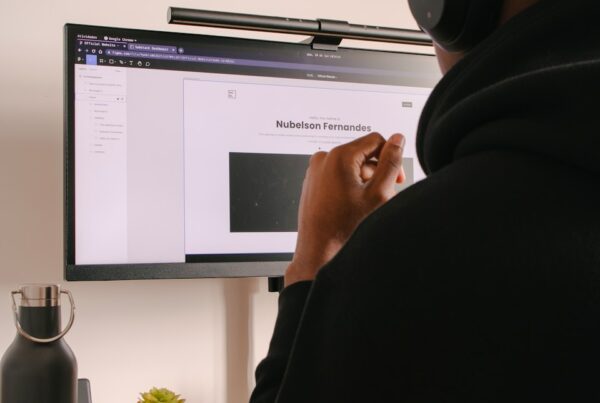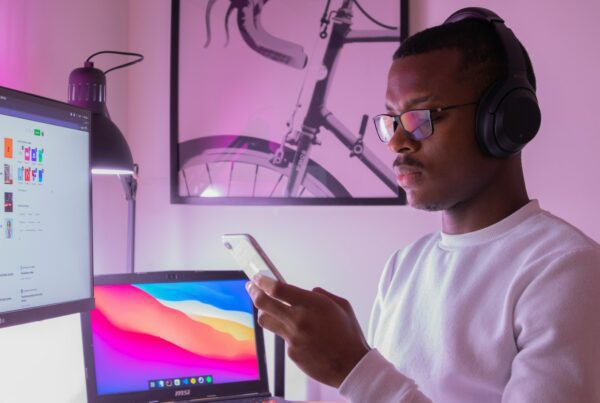In the vast and vibrant world of digital design, striking the perfect balance between aesthetics and functionality is akin to an art form. It’s a dynamic dance where visual appeal meets practical usability, creating a symphony that resonates with users worldwide. As we journey through the evolution of digital design, this blend of beauty and utility emerges not just as a trend, but as a fundamental aspect of successful digital products.
Where creativity meets practicality?
The Evolution of Digital Design: A Story of Growth and Change
Think back to the early days of the internet – websites were often a clutter of text and basic graphics. Fast forward to today, and it’s a whole new digital universe. We’ve seen an incredible transformation, where digital design has grown from simple aesthetics to a sophisticated discipline marrying user experience (UX) and user interface (UI) design.
The Power of Visual Storytelling
Take, for instance, the journey of a small startup’s website. Initially, it was just a functional site with basic navigation. But after a redesign focusing on a more visually engaging and user-friendly interface, the site experienced a whopping 50% increase in customer engagement. It’s stories like these that highlight the immense power of effective design.
UI/UX: The Heart and Soul of Functional Aesthetics
At the core of this beautiful union of form and function are UI and UX design. Think of UI as the face of your product – the layout, the colors, the buttons users click on. It’s what makes your product attractive at first glance. UX, on the other hand, is like the personality – it’s all about the user’s journey, ensuring it’s not just visually appealing but also efficient, intuitive, and satisfying.
Let’s Talk Numbers
Did you know? According to a Forrester Research study, a well-designed interface could hike a website’s conversion rate by a staggering 200%, and a superior UX design could boost conversion rates up to 400%. Numbers like these can’t be ignored!
The Human Touch in Design
What really matters in design is the human experience. It’s not just about making things look pretty. It’s about understanding and empathizing with the user. A design that misses this mark, no matter how visually stunning, can end up being more of a hindrance than a help.
Walk a Mile in Their Shoes
Imagine you’re designing for an elderly audience. Here, readability, ease of navigation, and simplicity take precedence. It’s all about stepping into the user’s shoes and seeing the world from their perspective.
The Digital Design Renaissance: AI, AR/VR, and Beyond
We’re living in a digital renaissance, where technologies like AI, AR/VR, and voice UI are transforming design. AI is no longer just a buzzword; it’s a tool that’s personalizing user experiences in ways we never imagined. AR/VR is breaking the boundaries of traditional screens, immersing users in entirely new worlds.
Ethics and Accessibility: The Pillars of Modern Design
As we embrace these technological wonders, we can’t forget the ethical side of things. AI must be used responsibly, avoiding biases and respecting user privacy. And let’s not forget about accessibility – designing for all, regardless of ability, is not just a legal checkbox but a moral imperative.
Best Practices for Digital Design in 2024
– Embrace Simplicity: A clean, uncluttered design can speak volumes.
– Keep Thinking Mobile: With most of the world on smartphones, responsive design is non-negotiable.
– Speed is Key: No one likes a slow website. Optimizing for speed is crucial.
– Inclusivity is a Must: Designing for a diverse audience broadens your reach and impact.
– Consistency is Comforting: A consistent look and feel make users feel at home.
– Understanding Your Audience: Tailoring your design to your audience’s needs and preferences is like giving them a bespoke suit – it just fits.
The Future Is Now: Embracing Change in Digital Design
As we look towards the horizon, the future of digital design is shimmering with potential. It’s a canvas waiting to be painted with innovative ideas and technologies. But at its heart, it’s about creating experiences that resonate with users – experiences that are not just visually stunning but also deeply intuitive and inclusive.
The Human-Centric Approach
Remember, at the end of the day, it’s all about the people using your products. Understanding their needs, their pains, and their delights is the key to creating designs that not only look great but also feel right.
The Symphony of Design
As we continue to navigate the ever-evolving landscape of digital design, let’s keep in mind that the most successful products are those that harmoniously blend aesthetics with functionality. It’s a symphony where every note matters – from the color palette to the user journey. This balance is what will continue to define the success and impact of digital design in the years to come.






